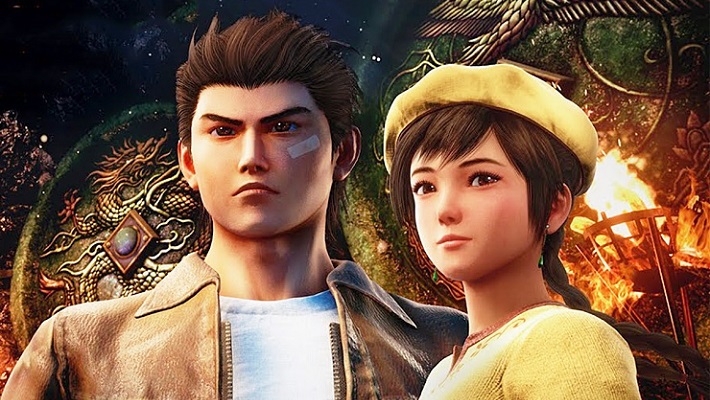
After 18 years, Shenmue III is finally upon us. Picking up from where Shenmue 2 left off, players take control of Ryo Hazuki, an 18 year-old martial artist from Japan hot on the trail of his father’s killer. While previous entries shuffled Ryo throughout Japan and Hong Kong, this entry spans both rural and urban China during 1987. You’ll have to balance detective work, brawls and part-time jobs in order to get closer to the Chinese Cartel. Torn between a life simulator and an action RPG, Shenmue is the epitome of a niche game. Combining gameplay straight from the early 2000s with cutting edge graphics, Shenmue III manages to feel nostalgically familiar, even with a fresh coat of paint. While this helps the game remain authentic to the cult classic franchise, new players will struggle to understand the appeal of Shenmue. Can the series stand the tides of time, or will its refusal to evolve be its own downfall?
Shenmue III
Publisher: Deep Silver
Developer: Neilo, Ys Net
Platforms: Windows PC, PlayStation 4 (Reviewed)
Release Date: November 19th, 2019
Players: 1
MSRP: $59.99
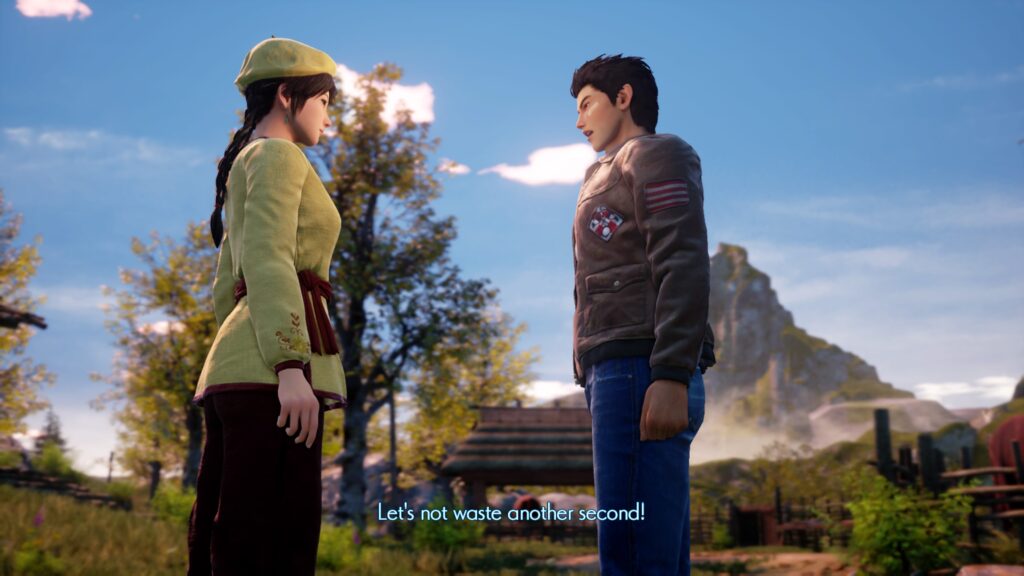
Shenmue 2 concluded with series protagonist Ryo Hazuki arriving in Guilin, China. Filled with rage, Ryo is hellbent on murdering the head of the Chinese Cartel, Lan Di. This stone-cold antagonist on his own quest for revenge, murdered Ryo’s father.
Watching his father’s final moments helplessly, Ryo swore revenge, setting in motion the events of the series. Even with a gap of 18 years between entries, Shenmue III doesn’t miss a beat.
Kicking off with a stunning recreation of Shenmue 2’s infamous cliffhanger ending, a freshly rendered Ryo discovers that his odyssey has been prophesied since ancient times. This revelation is made possible thanks to the guidance of a village girl named Shenhua.
Fated to lead Ryo, Shenhua appears to him in dreams throughout the series, becoming a main character with this new entry. As it becomes clear that the true purpose of Ryo’s journey is much greater than a quest to avenge his father’s murder, Shenhua discovers that her own father has gone missing. Noting an ominous feeling of danger lingering in the air, Ryo and Shenhua set off to find her father.
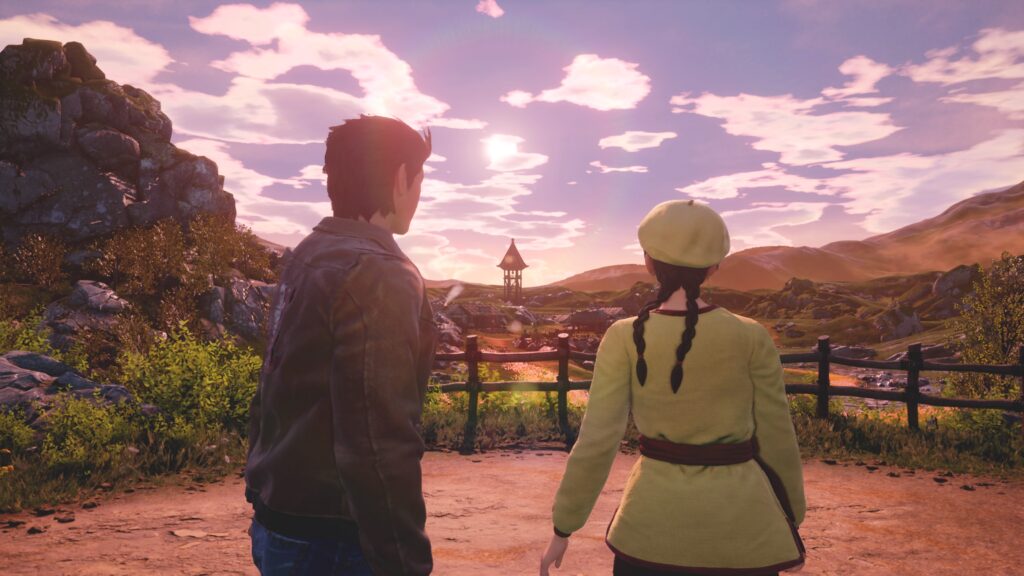
Upon exiting the quarry, a lens flare from Unreal Engine 4 transitions Shenmue III a whopping two console generations forward. Traversing a dirt path towards the nearest town, I found myself in awe looking at the textures on environmental surfaces.
In just one minute of controlling Ryo, you’ll notice ebbs and flows ripple throughout streams of water, craggy cliffs erode with wind gusts and flower petals blow in meadows.
As Ryo and Shenhua converse, you can see the porous texture on Shenhua’s shirt, the tapered fabric sleeves on Ryo’s bomber jacket and Ryo’s signature facial band-aid in a glorious 50 frames per second at full high definition (on PS4 pro).
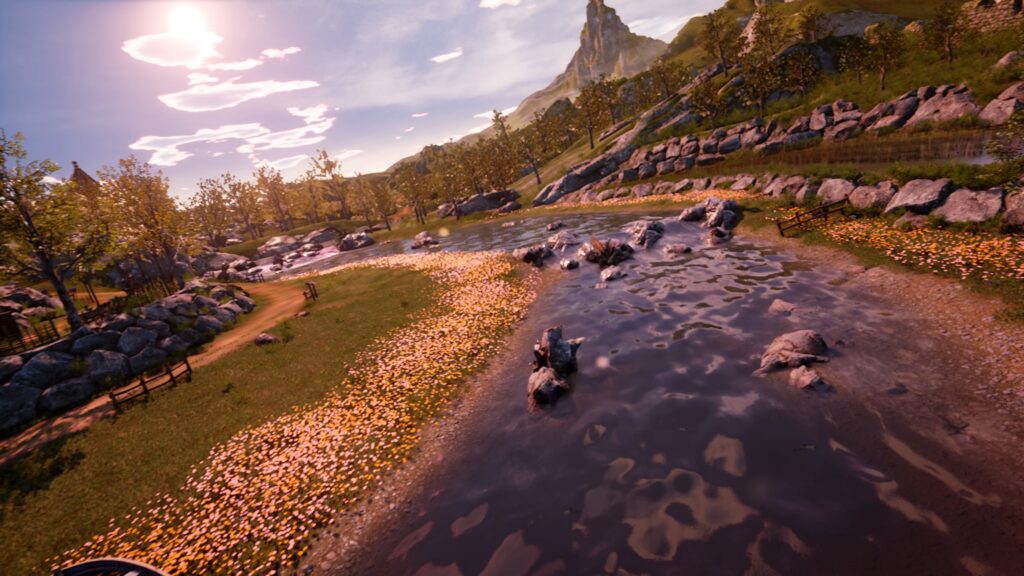
Shenmue III is a beautiful game. Crossing over the Verdant Bridge into the isolated Bailu Village, the game burst full of life. A myriad of children practice martial arts under their obese instructor. Bookies run familiar games such as Lucky Hit along a back wall. Adults gather and gossip in the central seating area.
Each of the dozen NPCs have their own name and scheduling. The best part? This tiny area and it’s citizens makes up just one of many that you’ll become familiar with as the story goes forward. It’s details like an entire living society that made Shenmue a revered name in the first place.
Shenmue III is no different. While character models are detailed, their appearance and animations are cartoony, juxtaposing the realistically crafted environment around them. Over time, the two styles diffuse into eachother other and create a style only Shenmue could pull off.
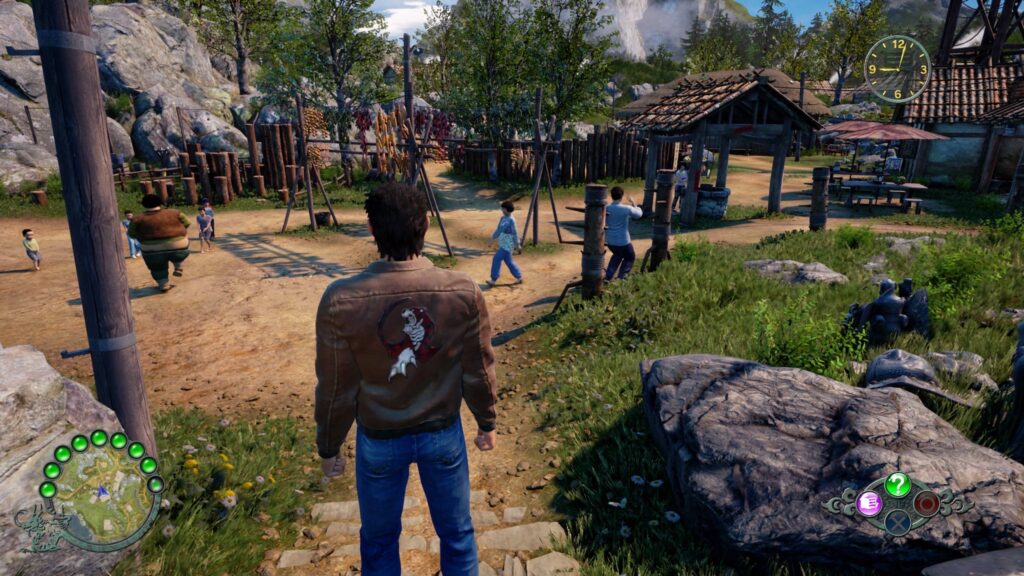
Gameplay is a natural transition from Shenmue 2. As the introduction comes to an end, you arrive in Bailu Village Square. This location serves as the hub for the first half of the game, connecting to crossroads that take you to different settlements on the map. Exploration is as hands-off as it’s ever been.
Your trusty journal captures important information and helps point you towards what to do next. Most of the time, this involves conversing with anything with a pulse to move the main plot along. While this is fine for the first 15 hours of the game, repetitive unskippable dialogue made detective work a chore.
Pry a bit further after you believe a conversation to be over for new leads in order to avoid hearing the same information. If you’re into side stories, you can assist villagers with requests that will appear on a separate tab of your book. Improving upon the highly specific event triggers of older games, you’ll easily stumble upon various events and side quests as you play the game.

While you’ll be walking everywhere, travel time is nowhere near as tedious as previous entries thanks to smart level design. Each area feels unique and spacious thanks to a variety of people, stores and activities, while in close proximity to other settlements on the map.
Simplifying things even further, Shenmue III adds a location jump and wait system that cuts out backtracking the series is notorious for. Did a conversation reveal that a key character only comes home after 7 P.M. on the other side of town? Not a problem, quick jumping automatically moves Ryo to the location at the correct time, moving the story forward quickly.
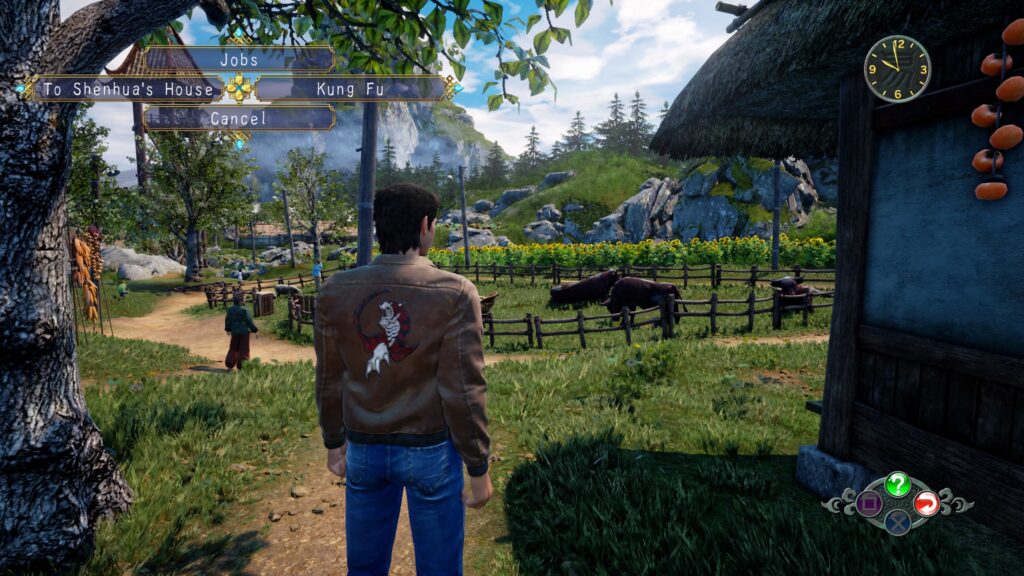
While this mechanic is a huge timesaver, Yu Suzuki and his team barely tweaked the core experience of Shenmue. For fans of the series, these incremental changes keep the game pure, just a bit easier to play. This authenticity helps Shenmue III feels like it could have come out directly after its predecessor. Capsule machines, forklifts and quick time events are ever present.
The deliberately slow pacing creates rich plot beats, however it may deter players from seeing the game through. You’ll still need to interrogate everyone you cross paths with, using context from conversations to figure out your next steps. Yes, you will again comb through drawers and rooms in a first person view to find clues of interest.
Yet again you’ll find yourself working part-time jobs or gambling in order to save up money to travel to the next area. Last but not least, you’ll still need to train up your skills and workout to become stronger for when you eventually do get into fights.
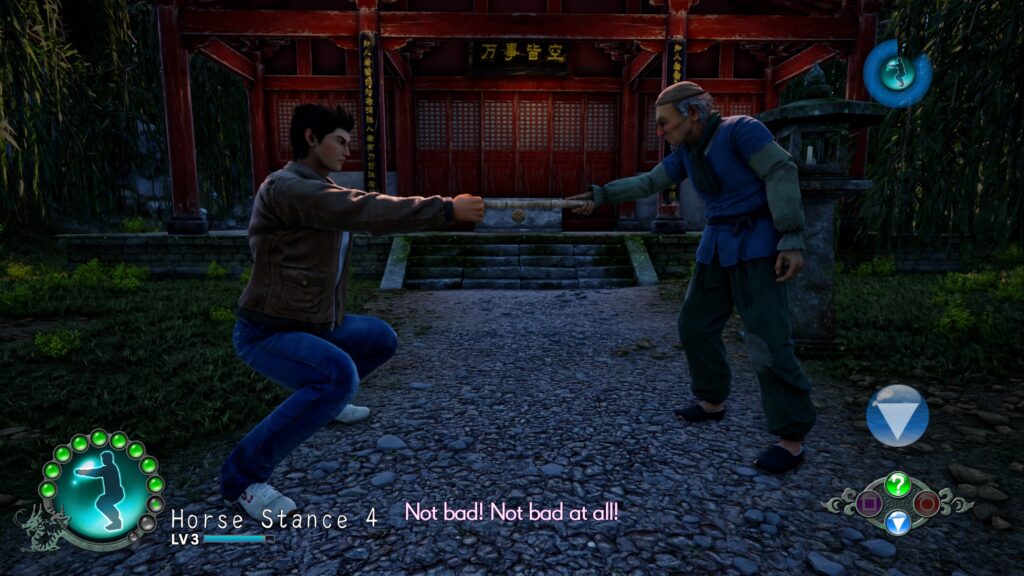
You can master your moves at dojos to raise your overall kung-fu level. Progression levels reward your efforts to perform exercises like the horse-stance or spar with local fighters.
Practicing your one-inch punch and footwork feels like a training montage out of an 80s martial arts movie, complete with motivational music. Just like the movies, practice pays off, raising your endurance and attack levels which reflect in your health bar and attack power.
Fighting in Shenmue III feels tighter than previous titles as pulling off complex moves is reliant on skill and muscle memory from your training. Striking distance feels realistic and making contact with an enemy creates a satisfying fleshy thud. These subtle touches aren’t very complex, but add more depth to the experience.
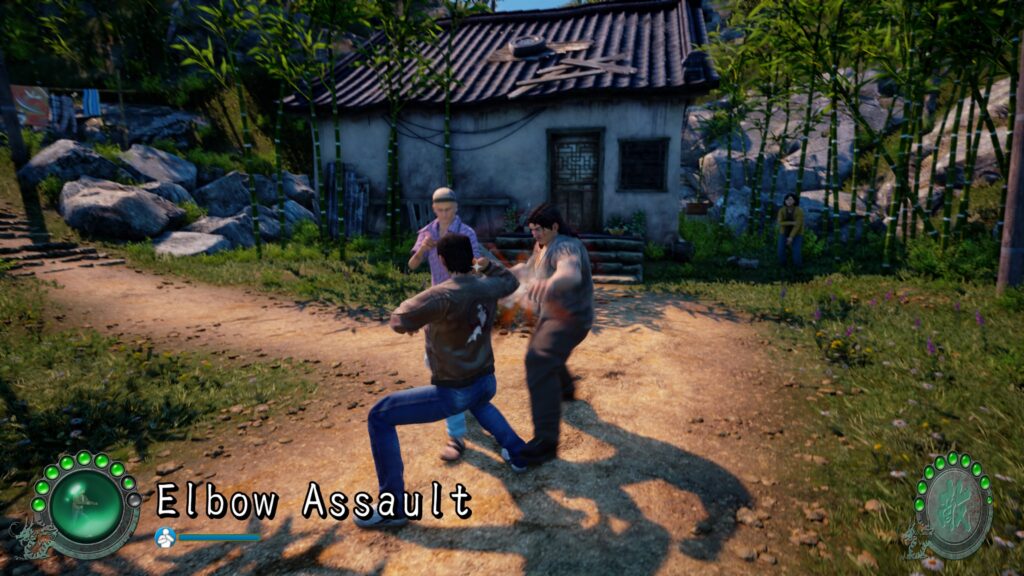
Speaking of depth, a new survival mechanic affects Ryo’s health and stamina. Forget to eat throughout the day and your performance suffers for it. The hunger status ailment not only affects your ability to fight or train, but limits the game’s draw of exploration.
Ryo will only be able to jog for a bit, then slow down to a crawl while commenting on his hunger. On several occasions, I arrived at a destination just to be recalled to another location due to time constraints.
Other than impeding active investigations, the amount of money required to feed Ryo throughout the day forced me to spend days working rather than moving the plot forward. The work-life balance is reflective of surviving in real life.
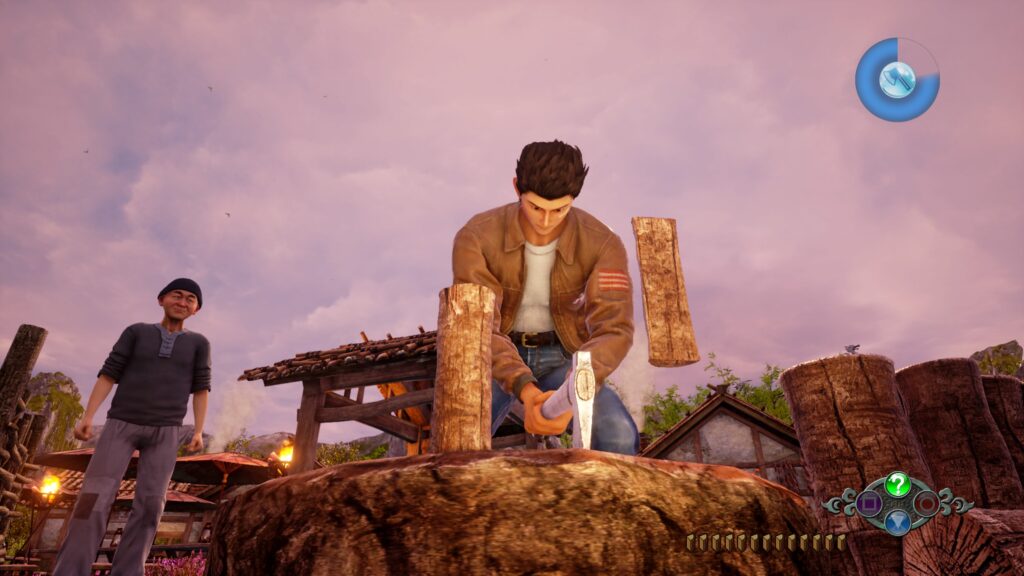
Immersive would be an understatement. I lost 12 hours straight to Shenmue III on my first day with it. In that time span I lived two full weeks as Ryo Hazuki. I interrogated the citizens of the rural village, picked herbs in the countryside and took on part-time work as a log cutter.
After arduous days of labor, I’d kick back at either Panda Market or Sunset Hill, Bailu’s nightlife hotspots to catch a drink, fill Ryo’s stomach and play arcade games at Hi-Tech Panda. Even in remote Chinese villages, people love to gamble. You’ll need to exchange cash for tokens in order to pay the variety of betting games.
You can cash out your winnings at a prize redemption shop, then sell the redeemed item at a nearby pawnshop for cash. During my time at the prize redemption shop, I discovered that I could buy or win new outfits and accessories for Ryo, a series first.

After progressing further in the plot, my simple rural life was cast aside as Ryo once again became a city detective. With a setting change to Niaowu, the serene village is traded for a neon urban sprawl similar to Shenmue 2’s Hong Kong area.
Sounds of streams, wind gusts and children playing are replaced by the horns of an encroaching ferry, buzzes of signs and sprinklings of city pop near the swanky parts of town.
With my headset on, the surrounding sounds transported me from my Long Island apartment to a Chinese port city in 1987. In addition to life-like sound effects, Shenmue III has a killer soundtrack heavily influenced by the strings and wind instruments used in past entries.

Is Shenmue III a good game? While it’s repetitive dialogue may be unskippable and the survival mechanic is a bit of a damper, Shenmue III is an experience unlike any title to release in recent memory.
It’s an immersive game that plays out like an 80s action movie, montage training sessions and all. Yu Suzuki stayed true to fans of the series and delivered a seamless transition for a series last seen two decades ago.
The game is damned if it does change to welcome new players and damned if it stagnates. With this new entry, only 40 percent of the entire Shenmue story has been told according to the game’s creator. While Shenmue III doesn’t move the plot as far as I’d like, I’m hungry for more.
Shenmue III was reviewed on PlayStation 4 using a review copy provided by Deep Silver. You can find additional information about Niche Gamer’s review/ethics policy here.